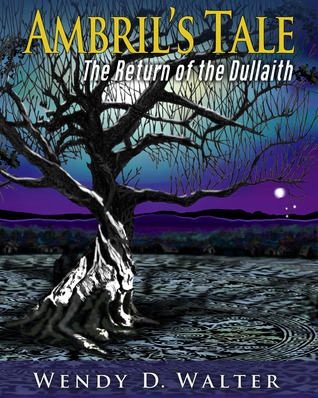
With Ambril’s Tale, Wendy D. Walter has made her first contribution to this venerable genre. While Potter comparisons are inevitable, it is the work of Diana Wynne Jones that leaps to mind when seeking to place Ambril’s Tale in its proper place in the lineage of children’s literature. Walter’s off-beat humor, unique characters, and engaging story are similar to Jones at her best.
Ambril’s Tale begins with 14-year-old Ambril Derwyn, along with her mom and older brother, moving back to Trelawnyd, the town where Ambril was born. The trio left Trelawnyd shortly after the mysterious death of Ambril’s father when Ambril was a toddler. It is not clear why Ambril’s mom has decided to return to the town they fled for reasons no one has bothered to explain to Ambril. What is clear is that Trelawnyd is one strange place.
In an interesting inversion of the Harry Potter world, in Trelawnyd it is the magic-wielders who catch grief. The townsfolk are proud of their founding families (the Derwyns included), but they insist that stories of magic are mere myths. Ambril very soon learns otherwise, as she discovers her own magical talent.
The story is as much mystery as fantasy as Ambril and her new friends work to discover what happened to Ambril’s dad and what secrets the town hides. The story is very funny, but the driving mystery and undercurrent of threat are quite serious. The town bully is so thoroughly nasty he makes Draco Malfoy look positively charming. Best-friend, Sully, is a font of wise-cracks and gallows-humor. After a particularly close call Sully deadpans, “That was fun in a horrible, near-death kind of way.”
Walter practices a magic too few writers are capable of wielding: putting readers right there in the story where they can see and hear and smell everything, yet never burdening the story with endless description. Her descriptions are the work of a true wordsmith:
…her white hair escaped her hat and tested the air currents
and
a collection of dinged old trophies, as if the sport had continued after the trophies had been handed out.
The ending is frustrating, however. A humorous garden scene goes on far too long, dispersing the tension. Then Walter tosses Ambril into mortal danger, only to tell readers to wait for Book Two for resolution, answering few if any of the many questions the story has posed. I hope the next installment has a more satisfying ending with less unfinished business. Walter does not need to resort to cliffhangers to keep her audience. She’s given readers a story, characters, and a writing style they’ll be eager to come back to.
Links
Get an Editorial Review | Get Amazon Sales & Reviews | Get Edited | Get Beta Readers | Enter the SPR Book Awards | Other Marketing Services






















Leave A Comment